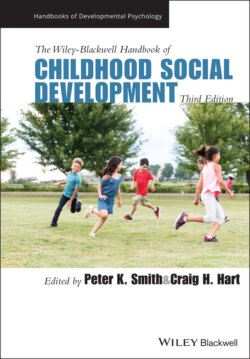Читать книгу The Wiley-Blackwell Handbook of Childhood Social Development - Группа авторов - Страница 110
The work of Gibson
ОглавлениеGibson’s (1979a) work on perception is often presented as the beginning of ecological psychology. He argued that perception could only be understood in relation to both the perceiver and the perceived. The environment that a living organism inhabits presents some possibilities and restricts others. An example might be the climate where an animal lives and the type of land. The organism also plays a part in influencing their habitats, for example by eating crops and building shelters. The environment offers an array of opportunities or “affordances” to organisms for how they can live in it (Gibson, 1979b). An organism’s characteristics will impact on which affordances are appropriate. For example, a tree can be used for climbing, eating, living in, or building with depending on the organism. The organism is also active in relation to affordances. For example, the potential of a tree to be used for building is only realized when it is felled and cut into pieces of wood. There is, therefore, an ongoing and reciprocal relationship between the organism and its surroundings. The organism both impacts on and is impacted by its environment.
Gibson saw perception and action as a reciprocal cycle, whereby what someone perceives influences their actions, and their actions impact on the way they perceive. Although Gibson’s theory was specifically about visual perception, the key premise of his ideas can inform our understanding of human development from an ecological perspective. He saw perception as an active process, shaped by characteristics of the environment, characteristics of the person, and relations with others. Therefore, the relationship between living things and their environments is mutual and reciprocal.
